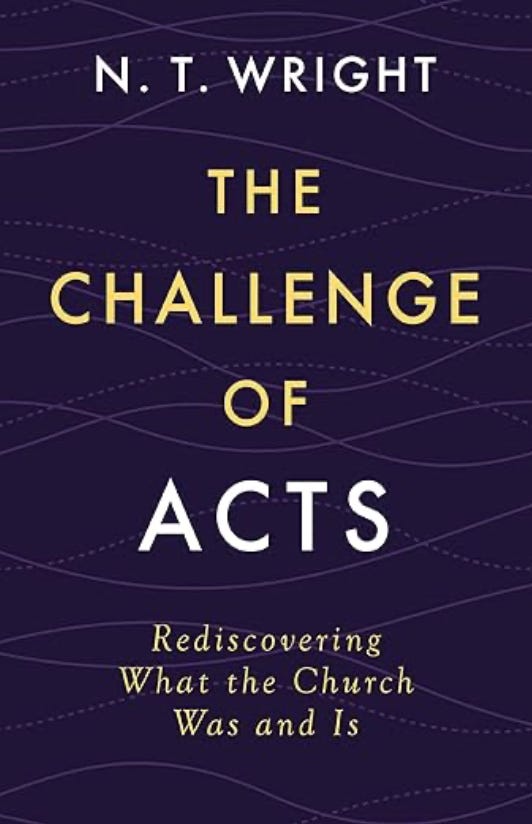Despite its small stature and few pages (‘small’ and ‘few’ compared to most of Wright’s works!), The Challenge of Acts turned out to be a challenging read. Although the Preface indicates a “bird’s-eye view” is on offer, there’s a sense in which it felt like Wright is talking his way through the book of Acts. Still, there are significant historical and biblical depths to be gleaned and readers will come away with a wider understanding of the background behind and flow of Luke’s narrative.
After an introductory first chapter, Acts is broken into four-chapter sequences identifying major themes and unpacking each. An entire chapter is devoted to Paul’s ‘Areopagus address’ in Acts 17:16-34, and it is from this that I offer some remarks.
One important misconception that Wright deals with is the notion that Paul’s address was set in a debate forum of philosophy. Instead, “the Areopagus was not a debating society. it was a law-court: the highest court in Athens” (p 102). The charge brought against Paul was that he was introducing “foreign divinities” (p 105). However, Wright insists Paul was not merely debating philosophical ideas, he was defending the gospel message. Paul was confronting the culture, not simply collaborating with it in an effort to find common ground. True, Paul uses the inscription on an alter “TO AN UNKNOWN GOD” or a familiar saying by a well known poet to bridge his argument, but Paul’s defense of the gospel message, and particularly the resurrection of Jesus, is front and center throughout this exchange.
From a practical side, Wright urges readers to take note of unsuspecting but ever-present ‘unknown gods’ in modern culture. Whether Mammon (the god of money, wealth), Aphrodite (erotic love, sensuality), or Mars (brute force and violence), all seek our allegiances and serve to stand in the place of the one true God.
The truth is that the Creator God has made a world in which what we know as ‘forces’, and what the ancients imagined were gods, have their vital roles to play in genuine human life. But to be genuinely human — to reflect the image of the true God — you need to abandon the idol and worship him alone. That is central to all Christian apologetics” (pp 110-111).
There are so many more insights and helpful applications that I find greatly beneficial and highly relevant. While my brief remarks here are meant to encourage a thoughtful read through, there is one final quote from this chapter that bears mentioning:
Some Christians have been so afraid of idolatry that they never notice the alters to the unknown God, leading them to warn against any attempt to see the true God in the sunrise or the smile of a child. Others have been so eager to embrace and affirm anything that looks vaguely ‘religious’ that they ignore or forget the real problem of idolatry, of religion ‘gone bad’. That either/or — lurching from nervous fear to over-eager embrace and back again — represents a major fault line. For the overcautious conservative today, Jesus' resurrection functions simply as a grand miracle that proves the existence of a ‘supernatural’ interventionist, rather than the inauguration of the new creation for which the whole world has been longing. For the over-eager liberal, the idea of Jesus' resurrection can only be a metaphor for a vague affirmation of God's benevolence, or his kingdom-project ….
Some today are so keen to engage with contemporary philosophy and culture that they forget how the biblical story actually works, and they produce a philosophically framed version of the faith with occasional biblical decoration. Others are so eager to proclaim the biblical story as they see it that they ignore the challenge to engage with contemporary culture and ideas. That stand-off, too, represents a fault line today between philosophical (or systematic) theology and biblical studies, as well as between wider forces in our culture. We urgently need to address this within an overarching commitment to the truth of God and his creation in the context of a genuine, enquiring, robust faith. (pp 121-122)
I could not agree more. May we see the fault lines, face the stand-off, and get on with proclaiming the good news of Christ crucified and risen!




